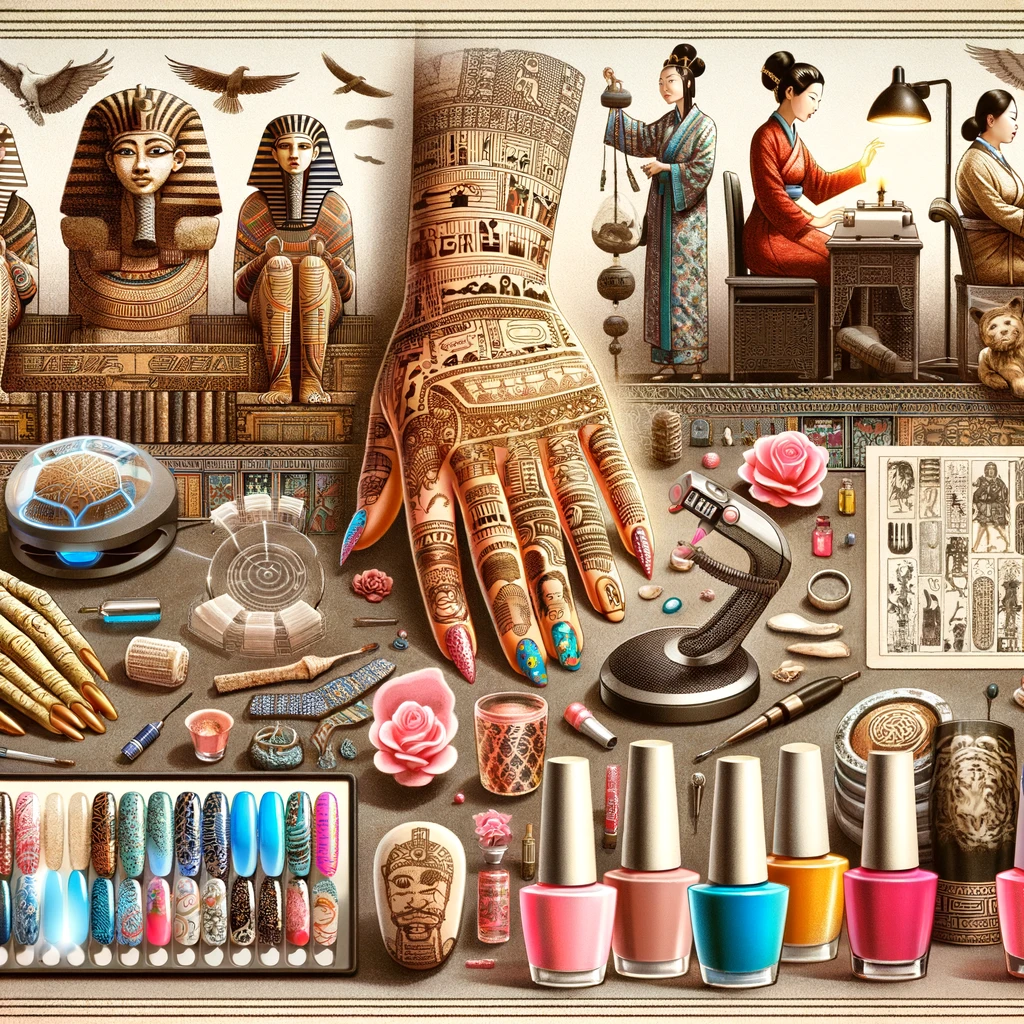Introduction
Nail care, a practice as old as civilization itself, has been a silent yet vibrant narrator of human history. From the ancient Egyptians to the fashion-forward individuals of the 21st century, the way we treat our nails has evolved dramatically, mirroring the technological advancements and cultural shifts of each era. This article embarks on a fascinating journey through time, exploring how nail care has transformed from simple grooming rituals into a sophisticated fusion of art, science, and technology.
Ancient Origins
The Cradle of Civilization
In the annals of history, nail care finds its roots in the grandeur of ancient Egypt. The Nile Valley, known for its pioneering advancements in various fields, also witnessed one of the earliest known practices of nail care. Pharaohs and queens like Cleopatra and Nefertiti used henna to stain their nails, with deeper hues indicating a higher social standing. This was more than a mere beauty practice; it was a display of power and elegance.
Far East Traditions
Simultaneously, in ancient China, nail care was evolving into an art form. During the Zhou Dynasty, a distinct practice emerged among the nobility. Long, well-manicured nails were a status symbol, often protected by elaborate gold and silver nail guards. The Chinese also pioneered the use of nail polish, created from a combination of beeswax, egg whites, gelatin, vegetable dyes, and gum arabic. This rich mixture, applied to nails, was a precursor to the modern nail enamels.
Renaissance to 19th Century
With the Renaissance came a renewed focus on aesthetics and personal grooming across Europe. Nail care, once again, found its way into the spotlight. The use of simple tools such as scissors and files became commonplace. Almond-shaped and subtly painted nails were a mark of refined taste during this period.
In the 19th century, the first semblance of the modern manicure emerged. The invention of the orange stick, a precursor to the modern cuticle pusher, marked a significant advancement. People began paying more attention to the health and shape of their nails, and manicures became a regular part of grooming routines for the upper classes.
20th Century Breakthroughs
The Birth of Modern Nail Polish
The 1920s were a turning point in nail care history. With the introduction of modern nail polish, a new era of nail aesthetics was born. Michelle Menard, inspired by automotive paint, created the first glossy nail enamel, revolutionizing the industry. This era also saw the rise of famed brands like Revlon in the 1930s, making colorful nails accessible to the masses.
Artificial Nails and Beyond
The latter half of the 20th century witnessed another significant development: the introduction of artificial nails. These provided solutions for those seeking longer, stronger nails and opened up new possibilities for nail art and expression.
Modern Technologies and Trends
The Age of Durability and Art
The 21st century has seen remarkable technological advancements in nail care. UV and LED nail lamps have made gel manicures popular, known for their durability and high-gloss finish. Nail art has become more intricate and accessible, with digital nail printing allowing for detailed and customized designs.
Social Media and Global Trends
Social media platforms have been instrumental in spreading diverse and innovative nail designs, creating a global community of nail enthusiasts and artists. Trends now spread rapidly, with hashtags and viral posts dictating the popular styles of the moment.
Conclusion
The evolution of nail care from ancient practices to modern technologies is a testament to human ingenuity and the ever-changing landscape of beauty and fashion. As we continue to witness advancements in technology and shifts in cultural trends, the future of nail care looks bright and boundlessly creative.
